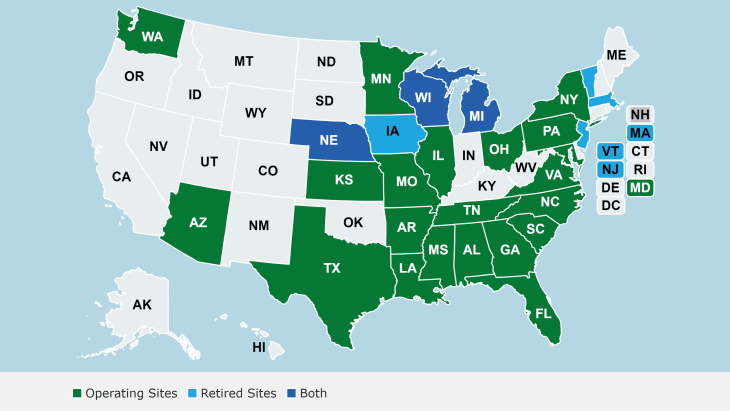The new report - Evaluation of Nuclear Power Plant and Coal Power Plant Sites for New Nuclear Capacity - examined all 54 operating and 11 recently retired nuclear power plant sites across 31 states. Researchers from Oak Ridge National Laboratory (ORNL) and Argonne National Laboratory took part in the study.
To estimate the viability of potentially adding new capacity at these locations, the researchers looked at the sites' footprint and size, aerial analysis, utility plans, and a siting analysis tool developed by ORNL. They also considered other factors such as the availability of adequate cooling water, proximity to large population centres or hazardous facilities, along with unacceptable seismic or flood hazards to assess potential deployment options.
Early research indicates that 41 operating and retired nuclear power plant sites in the USA have sufficient room to host one or more large light-water reactors. This, the US Department of Energy (DOE) says, would create an additional 60 GW of new capacity, with this increasing to 95 GW if sites are included that could potentially host smaller, advanced reactors of 600 MW.
"These locations would be ideal places to start building new reactors," DOE said.
Researchers also looked at sites with operating nuclear power plants where companies have previously engaged with the US Nuclear Regulatory Commission (NRC) on licensing for 17 additional reactors. While these reactors were never built, they were planned to be added to existing sites and could have led to 24 GW of new nuclear capacity.
According to the report, the NRC previously issued combined construction and operating licenses (COL) for eight large reactors at five existing sites - meaning they were already carefully characterised, evaluated and determined to be suitable for operation. Additional COL applications for nine more reactors were initiated at seven additional sites but were suspended or withdrawn before the NRC completed its review.
"This indicates there is a very high degree of confidence that these sites would be potentially suitable to host a reactor," DOE said. "Taking advantage of licensing engagements could speed up the licensing process and save time and money for new builds."
The report also looked at building nuclear power plants near coal plants and found an additional 128 to 174 GW of new nuclear capacity could be built, depending on the reactor type. DOE said the findings align with its previous research on coal-to-nuclear transitions that could leverage the existing workforce and some of the infrastructure in these energy communities to provide substantial economic and environmental benefits.
"It's important to note that this is only a preliminary analysis," DOE stressed. "Utilities and communities will need to work closely together to make the decisions on whether to build a new plant. As always, capital costs will be a key factor influencing this deployment."







_53514_33880.jpg)






